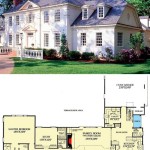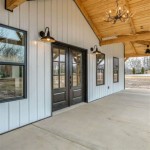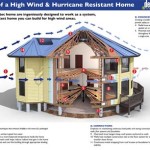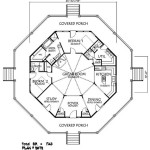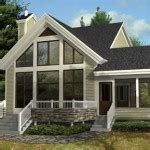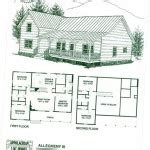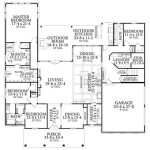Victorian Architecture House Plans are blueprints or designs that outline the construction and layout of Victorian-era houses. These plans incorporate the distinctive architectural features and styles that characterized the Victorian period, which spanned from the mid-19th century to the early 20th century. Victorian Architecture House Plans provide detailed instructions and specifications for the construction of these elaborate and often ornate homes.
Victorian-era houses are renowned for their intricate detailing, asymmetrical facades, and abundance of decorative elements. These plans provide valuable guidance to architects, builders, and homeowners who seek to recreate or restore the grandeur of this architectural style. By following the plans, professionals can accurately construct or renovate Victorian-inspired homes that adhere to the period’s aesthetic principles.
In this article, we will delve into the key features and considerations of Victorian Architecture House Plans. We will explore the different types of plans available, discuss their historical significance, and provide insights into how these plans can be utilized to create stunning and authentic Victorian-style homes.
Victorian Architecture House Plans are characterized by several key features that distinguish them from other architectural styles. These include:
- Asymmetrical facades
- Steeply pitched roofs
- Bay windows
- Ornate detailing
- Decorative porches
- Stained glass windows
- Turret or towers
- Wrap-around verandas
These features combine to create the distinctive and visually appealing aesthetic that is synonymous with Victorian architecture.
Asymmetrical facades
Asymmetrical facades are a defining characteristic of Victorian Architecture House Plans. They create a dynamic and visually interesting exterior by avoiding the symmetry that was prevalent in earlier architectural styles.
- Varying rooflines
Victorian houses often feature multiple rooflines, with different heights, angles, and shapes. This asymmetry adds depth and character to the facade.
- Off-center entrances
The main entrance to a Victorian house is not always located in the center of the facade. This off-center placement creates a more inviting and welcoming entryway.
- Bay windows and projections
Bay windows and projecting elements, such as porches and towers, add visual interest and break up the monotony of a flat facade.
- Decorative elements
Asymmetrical facades often incorporate decorative elements, such as gingerbread trim, stained glass windows, and elaborate moldings, to enhance the overall aesthetic appeal.
The combination of these elements creates a unique and visually striking facade that is characteristic of Victorian Architecture House Plans.
Steeply pitched roofs
Steeply pitched roofs are another characteristic feature of Victorian Architecture House Plans. These roofs not only add to the visual appeal of the house, but also serve several practical purposes.
- Protection from the elements
The steep pitch of Victorian roofs helps to shed water and snow more effectively, protecting the house from the elements. This is especially important in areas with heavy rainfall or snowfall.
- Increased attic space
The steep pitch of the roof creates more space in the attic, which can be used for storage or converted into additional living space.
- Improved ventilation
The steep pitch of the roof allows for better air circulation in the attic, which helps to keep the house cooler in the summer and warmer in the winter.
- Aesthetic appeal
Steeply pitched roofs add to the overall visual appeal of Victorian houses. The varying rooflines and angles create a dynamic and interesting exterior.
The combination of these factors makes steeply pitched roofs an essential element of Victorian Architecture House Plans.
Bay windows
Bay windows are a prominent feature of Victorian Architecture House Plans. They are characterized by their projecting, polygonal shape, which creates a more spacious and inviting interior. Bay windows offer several advantages over traditional windows:
- Increased natural light
Bay windows allow for more natural light to enter the room, creating a brighter and more cheerful space.
- Improved ventilation
The multiple windows in a bay window allow for better air circulation, which helps to keep the room fresh and comfortable.
- Enhanced views
Bay windows provide a wider field of view, offering occupants panoramic views of the surrounding area.
- Increased space
The projecting shape of a bay window adds extra space to the room, which can be used for seating, storage, or other purposes.
Bay windows are often used in conjunction with other Victorian architectural elements, such as steeply pitched roofs and asymmetrical facades. They can be found in a variety of shapes and sizes, from small, single-story bay windows to large, multi-story bay windows that span the entire height of the house.
One of the most popular types of bay windows is the three-sided bay window. This type of bay window projects from the house at a 45-degree angle, creating a spacious and inviting seating area. Three-sided bay windows are often used in living rooms, dining rooms, and master bedrooms.
Another popular type of bay window is the five-sided bay window. This type of bay window projects from the house at a 30-degree angle, creating a more dramatic and visually striking effect. Five-sided bay windows are often used in grander homes, such as mansions and Victorian palaces.
Bay windows are an essential element of Victorian Architecture House Plans. They add character, charm, and functionality to Victorian-era homes.
Ornate detailing
Ornate detailing is a hallmark of Victorian Architecture House Plans. It adds visual interest, character, and charm to Victorian-era homes. Victorian architects and builders used a variety of decorative elements to embellish their houses, including:
- Gingerbread trim
Gingerbread trim is a type of elaborate, decorative woodwork that is often used to adorn Victorian houses. It is characterized by its intricate patterns and scrolling designs. Gingerbread trim can be found on porches, gables, eaves, and other exterior elements.
- Stained glass windows
Stained glass windows are another popular decorative element in Victorian Architecture House Plans. They add color, light, and beauty to Victorian homes. Stained glass windows can be found in a variety of styles and designs, from simple geometric patterns to elaborate figural scenes.
- Elaborate moldings
Elaborate moldings are used to add depth and interest to Victorian houses. They can be found around windows, doors, ceilings, and other architectural elements. Moldings can be simple or ornate, and they can be made from a variety of materials, including wood, plaster, and stone.
- Decorative hardware
Decorative hardware, such as doorknobs, hinges, and locks, is another way to add Victorian charm to a home. Victorian hardware is often made from cast iron or brass, and it is often intricately designed. Decorative hardware can be found on both the interior and exterior of Victorian homes.
Ornate detailing is an essential element of Victorian Architecture House Plans. It adds character, charm, and visual interest to Victorian-era homes.
Decorative porches
Decorative porches are a prominent feature of Victorian Architecture House Plans. They add character, charm, and functionality to Victorian-era homes. Victorian porches are typically large and spacious, and they are often adorned with intricate gingerbread trim, decorative columns, and stained glass windows.
One of the most popular types of Victorian porches is the wrap-around porch. Wrap-around porches extend around two or more sides of the house, creating a spacious and inviting outdoor living space. Wrap-around porches are often used for entertaining guests, relaxing, and enjoying the outdoors.
Another popular type of Victorian porch is the porte-cochere. A porte-cochere is a covered porch that is used to shelter carriages and automobiles. Porte-cocheres are typically located at the front of the house, and they often feature elaborate columns and decorative woodwork.
Victorian porches can also be used to add a touch of whimsy to a home. Some Victorian homes feature porches with turrets, towers, and other fanciful elements. These porches add a unique and charming touch to Victorian-era homes.
Porches are an essential element of Victorian Architecture House Plans. They add character, charm, and functionality to Victorian-era homes. Whether you are looking for a spacious wrap-around porch for entertaining guests or a whimsical porch with turrets and towers, you are sure to find the perfect porch for your Victorian home.
Stained glass windows
Stained glass windows are a prominent feature of Victorian Architecture House Plans. They add color, light, and beauty to Victorian-era homes. Stained glass windows can be found in a variety of styles and designs, from simple geometric patterns to elaborate figural scenes.
- Increased natural light
Stained glass windows allow for more natural light to enter the room, creating a brighter and more cheerful space. The colors and patterns in the stained glass can also create a unique and beautiful light display.
- Improved privacy
Stained glass windows can provide privacy while still allowing light to enter the room. The opaque nature of the glass prevents people from seeing into the room from the outside, while the light that shines through the glass creates a beautiful and inviting atmosphere.
- Enhanced aesthetic appeal
Stained glass windows are a beautiful and unique way to add character to a home. The colors, patterns, and designs of the stained glass can be customized to match the style of the home and the personality of the homeowner.
- Historical significance
Stained glass windows have been used in architecture for centuries. They were particularly popular during the Victorian era, when they were used to add beauty and elegance to homes, churches, and other buildings. Stained glass windows are a valuable part of our architectural heritage, and they can add a touch of history and charm to any home.
Stained glass windows are an essential element of Victorian Architecture House Plans. They add color, light, beauty, privacy, and historical significance to Victorian-era homes. Whether you are looking for a simple geometric pattern or an elaborate figural scene, you are sure to find the perfect stained glass window for your Victorian home.
Turret or towers
Turrets and towers are iconic features of Victorian Architecture House Plans. They add height, drama, and a touch of whimsy to Victorian-era homes. Turrets are typically small, round towers that project from the main body of the house. Towers are taller and more substantial than turrets, and they can be square, round, or octagonal in shape.
Turrets and towers can be used for a variety of purposes. They can be used as lookout points, storage spaces, or even as living spaces. Turrets and towers can also be used to add visual interest to a home, and they can help to create a more dramatic and imposing facade.
One of the most popular types of turret is the corner turret. Corner turrets are typically located at the corners of the house, and they can be used to add height and interest to the facade. Corner turrets can also be used to create a more private and secluded space, as they often have windows that overlook the surrounding area.
Another popular type of turret is the belvedere turret. Belvedere turrets are typically located on the roof of the house, and they offer panoramic views of the surrounding area. Belvedere turrets are often used as a place to relax and enjoy the scenery, and they can also be used as a lookout point.
Turrets and towers are an essential element of Victorian Architecture House Plans. They add height, drama, and a touch of whimsy to Victorian-era homes. Whether you are looking for a small corner turret or a grand belvedere turret, you are sure to find the perfect turret or tower for your Victorian home.
Wrap-around verandas
Wrap-around verandas are a prominent feature of Victorian Architecture House Plans. They are spacious, inviting, and provide a seamless connection between the indoors and outdoors. Wrap-around verandas extend around two or more sides of the house, creating a continuous outdoor living space that can be enjoyed from multiple rooms.
- Increased living space
Wrap-around verandas add significant living space to a home. They can be used for a variety of purposes, such as relaxing, entertaining, and dining. Wrap-around verandas are a great place to enjoy the outdoors without having to leave the comfort of your home.
- Improved natural light
Wrap-around verandas allow for more natural light to enter the home. The large windows and open design of wrap-around verandas create a bright and airy atmosphere. Natural light has been shown to have many benefits, including improved mood, increased productivity, and better sleep.
- Enhanced curb appeal
Wrap-around verandas add curb appeal to a home. They create a grand and inviting facade that is sure to impress visitors. Wrap-around verandas can also help to increase the value of a home.
- Historical significance
Wrap-around verandas have been a popular feature of homes for centuries. They were particularly popular during the Victorian era, when they were used to add style and sophistication to homes. Wrap-around verandas are a valuable part of our architectural heritage, and they can add a touch of history and charm to any home.
Wrap-around verandas are an essential element of Victorian Architecture House Plans. They add space, light, curb appeal, and historical significance to Victorian-era homes. Whether you are looking for a place to relax, entertain, or simply enjoy the outdoors, a wrap-around veranda is the perfect addition to your home.










Related Posts

